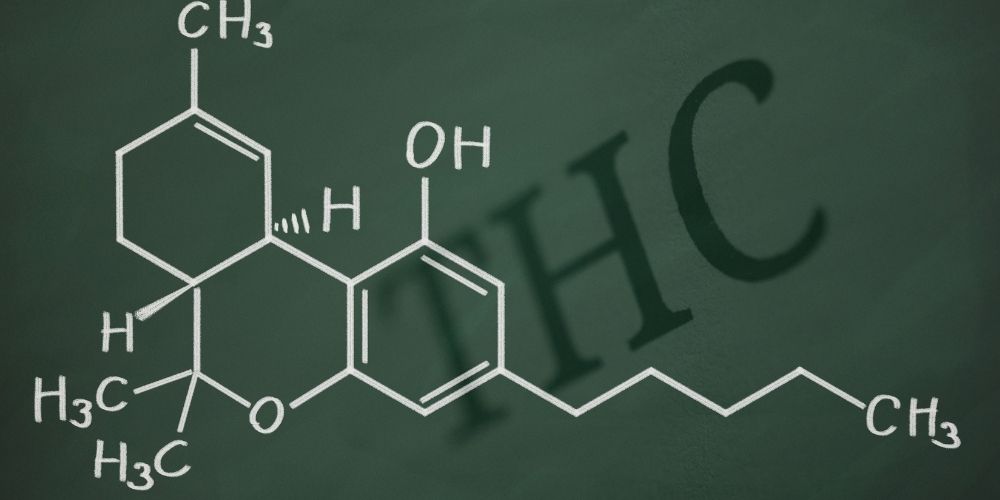
What is the Endocannabinoid System (ECS)?
If you are a fan of the Cannabis sativa plant, get to know more about what the endocannabinoid system does and how it works. If you’re after some of the best cannabis products available, there’s no better way to find them than to understand what your own endocannabinoid system does.
In this post, we’ll get into how the endocannabinoid system works, and explore cannabinoids and what they do.
Cannabinoid Definition
Cannabinoids are naturally occurring plant chemicals found in cannabis. Endocannabinoids are endogenous lipid neurotransmitters that bind with cannabinoid receptors. Endocannabinoids are mediators of short- and long-term synaptic, presynaptic, and postsynaptic plasticity alongside substances such as calcium in diverse structures of the brain.
The most famous cannabinoid is Δ9 tetrahydrocannabinol (Δ9THC), the main psychoactive component in cannabis. Cannabidiol (CBD) is almost as well known as THC these days. Despite the fame of THC and CBD, there are more than 100 different cannabinoids in cannabis, which exhibit a range of effects.
Cannabis starts by synthesizing several cannabinoid acids which must be decarboxylated or made active, usually by heat. After this process, other cannabinoids are created, as well as related cannabinoid acids and corresponding cannabinoid compounds:
- CBCA (Cannabichromenenic acid) —> CBC (Cannabichromene)
- CBCVA (Cannabichromevarinic acid) —> CBCV (Cannabichromevarin)
- CBDA (Cannabidiolic acid) —> CBD (Cannabidiol)
- CBDVA (Cannabidivarinic acid) —> CBDV (Cannabidivarin)
- CBGA (Cannabigerolic acid) —> THCA (Δ9-tetrahydrocannabinolic acid), CBDA (Cannabidiolic acid), CBCA (Cannabichromenenic acid) —> [remaining CBGA] —> CBG (Cannabigerol)
- CBGVA (Cannabigerovarinic acid) —> CBGV (Cannabigerivarin)
- CBN —> With time and exposure to oxygen, THC gradually breaks down into CBN
- Δ9THCA (Δ9-tetrahydrocannabinolic acid) —> THC (Δ9–tetrahydrocannabinol)
- Δ8THC (Δ8–tetrahydrocannabinol) —> occurs in trace amounts in nature, primarily converted in a lab from CBD isolate
- THCVA (Tetrahydrocanabivarinic acid) —> THCV (Tetrahydrocannabivarin)
The Endocannabinoid System
The endocannabinoid system (ECS), sometimes called the endogenous cannabinoid system, exists in all mammals. This biological cannabinoid signaling system consists mostly of endocannabinoids and their receptors, and enzymes. The ECS regulates a broad range of human functions, including pain sensation and modulation, mood, immune responses, memory, synapse regulation, appetite, reproduction, and sleep.
The ECS and endocannabinoid signaling help the human body move toward homeostasis, a place of balance between the various healthy systems. To maintain homeostasis—or in some cases re-establish or achieve it in the first place—the ECS helps keep basic body functions such as blood pressure and blood sugar levels well-regulated and in optimal ranges.
The three components of the human endocannabinoid system are: endocannabinoids, cannabinoid receptors, and enzymes. Endocannabinoids are the tiny molecules that interact with the body’s cannabinoid receptors, located on surfaces of cells. The enzymes are vital to the system in that they digest endocannabinoids after use.
So why do we have cannabinoid receptors—and what are they? Cannabinoid receptors are G protein-coupled receptors that bind ligands, in this case, cannabinoids. These receptors work like a thermostat or sensor, collecting data on conditions outside a cell as they sit on its surface, and then kick-start the right cellular response like the thermostat kicks on the heat or AC based on outside conditions.
CB1 and CB2 are the two major cannabinoid receptors, and they are both found throughout the body. CB1 receptors are most prevalent inside the central nervous system (CNS) and brain, and THC interacts with these to produce the cannabis high. CB2 receptors are more abundant throughout the peripheral nervous system in places like the immune system, outside the CNS.
Anandamide and 2-AG are the two major endocannabinoids. Anandamide, sometimes called the bliss molecule, is scientifically known as N-arachidonoylethanolamine (AEA). 2-AG. 2-ArachidonoylGlycerol or 2-AG is an endogenous ligand for the CB1 cannabinoid receptor present at high levels in the CNS and in breast milk.
Arachidonic acid is also a structural part of endocannabinoids that have signaling functions associated with neurotransmitter release modulation, which might involve appetite regulation, energy metabolism, learning, memory, and pain perception.
The metabolic enzymes that are part of the ECS quickly destroy endocannabinoids once they are used. Monoacylglycerol lipase (MAGL) breaks down 2-AG so it doesn’t persist in the body any longer than it’s needed, and fatty acid amide hydrolase (FAAH) serves the same purpose with anandamide. And mammalian diacylglycerol kinases (DGK) are enzymes that catalyze reactions with consequences for metabolism of lipids and lipid metabolites, including 2-arachidonoyl glycerol (2-AG), and play a role in the epilepsy disease process.
What Do Cannabinoids Do to the Body?
Does your body need cannabinoids? Your body needs to maintain homeostasis. When a cell goes out of balance, the ECS responds.
Endocannabinoids typically limit or suppress inflammation in the immune system. For example, when a bacterial infection attacks the body, the immune system triggers pro-inflammatory molecules. This reaction calls other immune cells to help battle the infection, but it also moves the ECS into action.
The system releases endocannabinoids. These help limit the inflammatory response so it isn’t excessive and assist in signaling other immune cells. This helps the body fight infection without damaging itself, and return to normal.
Plant cannabinoids produce medicinal and psychoactive effects in the body mostly because they interact with the endocannabinoid system. For example, THC activates the CB1 receptor within the brain, producing a “high.” Other endocannabinoids such as anandamide also activate CB1 in the brain, though, so why aren’t we always high?
First, because the natural endocannabinoids such as anandamide interact with CB1 differently than exogenous cannabinoids such as THC. Second, because the metabolic enzymes that break down endocannabinoids don’t break down THC—which is why it stays in the body for a while.
Molecules such as cannabinoids rarely interact with only one type of receptor, and often they interact with many. CBD, which interacts with numerous types of receptors in the brain, is a great example of this. The bottom line is that although endocannabinoids and plant cannabinoids may activate the same cannabinoid receptors, they will probably also interact with other receptors, and produce unique effects.
However, none of this means that the ECS, whether it’s activated through cannabis consumption or not, will always mean great health. The endocannabinoid system is complex, and can be thrown off by prolonged pathological factors over time. In other words, like any other system in the body, the ECS can itself suffer.
The ECS is also a target for medications. For example, Rimonabant is an inverse agonist for the cannabinoid receptor CB1 and the first approved selective CB1 receptor blocker anywhere in the world. This anorectic anti-obesity drug that reduces appetite is marketed and produced by Sanofi-Aventis.
Final Thoughts
We hope this introduction to the endocannabinoid system has been an interesting place to start. As cannabis is legalized in more places and the mandate against research lifts, we expect to learn more about how the human endocannabinoid system works.
Written by Diet Smoke Staff Writers
The staff writers for Diet Smoke have been researching and writing about premium hemp-derived THC and CBD products for more than 3 years. The team has a keen understanding of the topic, remain current on all FDA and industry news, and use their expertise to generate engaging and informative content to help educate consumers on Diet Smoke’s products. Each article is fact-checked and includes sources to scientific data to ensure readers receive the most up-to-date and accurate information possible.
Reviewed By Colby Wohlleb
Colby Wohlleb, editor of Diet Smoke, reviews and approves all content before releasing it for posting on the Diet Smoke website. As a tireless advocate for the benefits of premium hemp-derived THC and CBD products, Colby ensures that all content is accurate, engaging, and informative. He also works directly with a trusted source to ensure the purity of the products we sell and performs rigorous lab testing to ensure that Diet Smoke’s products are of the highest quality and safety standards.



